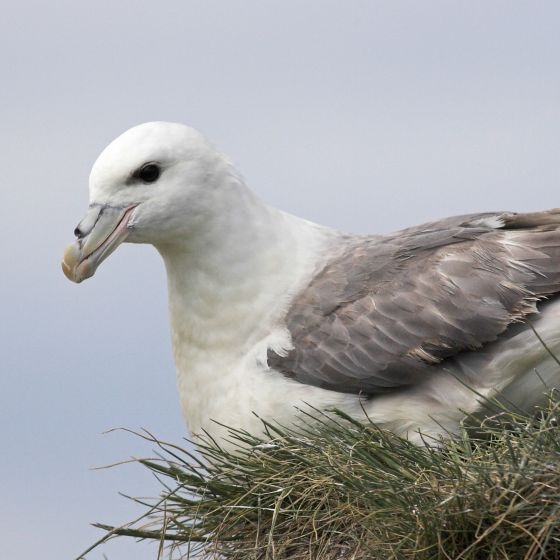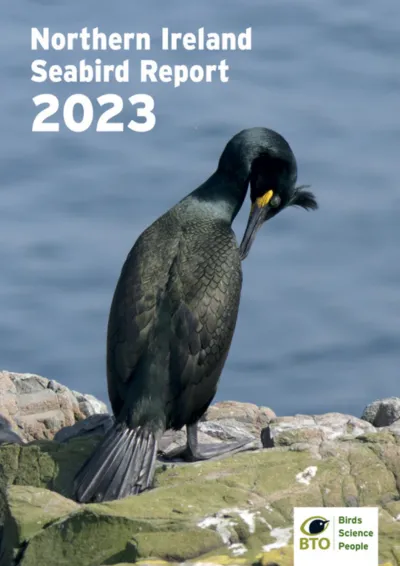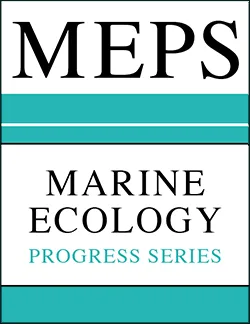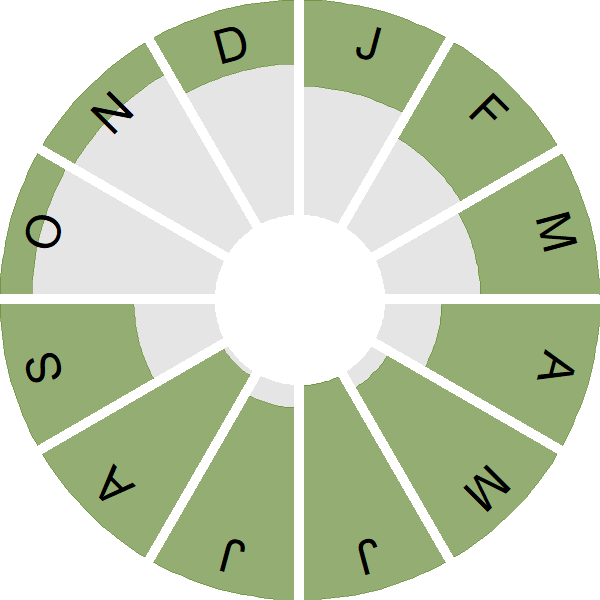Fulmar

Introduction
This robust-looking seabird breeds around the coasts of Scotland, Ireland, Wales, and the south-west and north-east of England, but may be encountered more widely around our shores outside of the breeding season.
Fulmar has a remarkable breeding history, its North Atlantic population originally restricted to St Kilda and an island off the coast of Iceland. The last 250 years have seen a remarkable expansion in Fulmar populations and the colonisation of suitable sites around Iceland, Britain, Ireland, northwest France and sections of the Norwegian coast. The reasons for the expansion are unclear.
Young Fulmars spend their first four or five years at sea, before visiting the colonies at which they will then breed. Even then, they will not breed themselves until they are nine years of age and reach sexual maturity.

Key Stats
Identification
Songs and Calls
Call:
Status and Trends
Conservation Status
Population Change
The Fulmar is monitored by Seabird Censuses and by the Seabird Monitoring Programme, with sufficient colonies monitored to produce annual trends since 1985; The population increased by 77% between the 1969–70 and 1985–88 Censuses and remained relatively stable until the early 2000s. Numbers have since declined slightly but remain above the level in 1969–70 (JNCC 2022). The Atlas maps show very little change, with a small expansion in range between 1968–72 and 1988–91 being followed by a slight contraction to 2007–11.
Distribution
Fulmars breed around almost the entire coastline of Scotland, Wales and Ireland, and in the southwest and northeast of England. They are absent from long stretches of the east and southeast coasts of England, reflecting the limited availability of suitable seacliffs for nesting. In winter, some of these gaps are filled, indicating that Fulmars disperse more widely outside the breeding season.
Occupied 10-km squares in UK
2007/08–10/11
or view it on Bird Atlas Mapstore.
2008–11
or view it on Bird Atlas Mapstore.
European Distribution Map
Distribution Change
There have been small changes in breeding distribution.
Change in occupied 10-km squares in the UK
from 1981–84 to 2007–11
or view it on Bird Atlas Mapstore.
from 1968–72 to 2008–11
or view it on Bird Atlas Mapstore.
Seasonality
Fulmars are present year-round, most often recorded in the breeding season until the abrupt departure of the majority of birds in September, whereafter scarce.
Weekly pattern of occurrence
The graph shows when the species is present in the UK, with taller bars indicating a higher likelihood of encountering the species in appropriate regions and habitats.

Movement
Britain & Ireland movement
Foreign locations of birds ringed or recovered in Britain & Ireland
Dots show the foreign destinations of birds ringed in Britain & Ireland, and the origins of birds ringed overseas that were subsequently recaptured, resighted or found dead in Britain & Ireland. Dot colours indicate the time of year that the species was present at the location.
- Winter (Nov-Feb)
- Spring (Mar-Apr)
- Summer (May-Jul)
- Autumn (Aug-Oct)

European movements
EuroBirdPortal uses birdwatcher's records, such as those logged in BirdTrack to map the flows of birds as they arrive and depart Europe. See maps for this species here.
The Eurasian-African Migration Atlas shows movements of individual birds ringed or recovered in Europe. See maps for this species here.
Biology
Productivity and Nesting
Nesting timing
Egg measurements
Clutch Size
Survival and Longevity
Survival is shown as the proportion of birds surviving from one year to the next and is derived from bird ringing data. It can also be used to estimate how long birds typically live.
View number ringed each year in the Online Ringing Report.
Lifespan
Survival of adults
Biometrics
Wing length and body weights are from live birds (source).
Wing length
Body weight
Ring Size
Classification, names and codes
Classification and Codes
- Order: Procellariiformes
- Family: Procellariidae
- Scientific name: Fulmarus glacialis
- Authority: Linnaeus, 1761
- BTO 2-letter code: F.
- BTO 5-letter code: FULMA
- Euring code number: 220
Alternate species names
- Catalan: fulmar boreal
- Czech: burnák lední
- Danish: Mallemuk
- Dutch: Noordse Stormvogel
- Estonian: jää-tormilind
- Finnish: myrskylintu
- French: Fulmar boréal
- Gaelic: Eun-crom
- German: Eissturmvogel
- Hungarian: északi sirályhojsza
- Icelandic: Fýll
- Irish: Fulmaire
- Italian: Fulmaro
- Latvian: kilde
- Lithuanian: šiaurinis fulmaras
- Norwegian: Havhest
- Polish: fulmar (zwyczajny)
- Portuguese: pombalete
- Slovak: fulmar ladový
- Slovenian: ledni viharnik
- Spanish: Fulmar boreal
- Swedish: stormfågel
- Welsh: Aderyn Drycin y Graig
Research
Causes of Change and Solutions
Causes of change
The reasons behind changes in the Fulmar population are uncertain, but changes in the supply of food by man, e.g. discards from fishing vessels, have been suggested as a possible driver of the increases in the population until the late 1980s (JNCC 2022) and similarly the more recent slight decline may have been influenced by a reduction in the amount of discards (Bicknell et al. 2013). Data from two colonies (one in Scotland and one in Ireland) suggest that there may have been a decline in survival over the period 1974 to 2009 (Cordes et al. 2015); the reasons for this are unclear but this could be a potential consequence from reductions in prey populations and bycatch from fisheries .
Publications (5)
The status of the UK’s breeding seabirds
Author: Stanbury, A.J., Burns, F., Aebischer, N.J., Baker, H., Balmer, D., Brown, A.F., Dunn, T., Lindley, P., Murphy, M., Noble, D.G., Owens, R. & Quinn, L.
Published: 2024
Five seabird species are added to the Birds of Conservation Concern Red List in this addendum to the 2021 update, bringing the total number of Red-listed seabird species to 10, up from six since ...
29.09.24
Papers

Seabird Population Trends and Causes of Change: 1986–2023
Author: Harris, S.J., Baker, H., Balmer, D.E., Bolton, M., Burton, N.H.K., Caulfield, E., Clarke, J.A.E., Dunn, T.E., Evans, T.J., Hereward, H.R.F., Humphreys, E.M., Money, S. and O’Hanlon, N.J.
Published: 2024
This report presents the latest seabird population trends in breeding abundance and productivity using data from the Seabird Monitoring Programme (SMP).The report documents changes in the abundance ...
21.11.24
Reports SMP Report

Northern Ireland Seabird Report 2023
Author: Booth, K.J. & El Haddad, H.
Published: 2024
The report includes detailed information about the population trends and breeding success of seabirds in Northern Ireland, over the 2023 breeding season. Notably, Fulmar and Kittiwake populations are ...
15.04.24
Reports Northern Ireland Seabird Report

Seabird abundances projected to decline in response to climate change in Britain and Ireland
Author: Davies, J.G., Humphreys, E.M., Evans, T., Howells, R., O’Hara-Murray, R. & Pearce-Higgins, J.W.
Published: 2023
Britain and Ireland support globally-important numbers of breeding seabirds, but these populations are under pressure from a suite of threats, including marine pollution, habitat loss, overfishing and ...
05.12.23
Papers

Seabird foraging ranges as a preliminary tool for identifying candidate Marine Protected Areas
Author: Thaxter, C.B., Lascelles, B., Sugar, K., Cook, A.S.C.P., Roos, S., Bolton, M., Langston, R.H.W. & Burton, N.H.K.
Published: 2012
The UK government is committed to establishing an ecologically coherent network of Marine Protected Areas (MPAs) to manage and conserve marine ecosystems. Seabirds are vital to such ecosystems, but ...
01.01.12
Papers

More Evidence
More evidence from Conservation Evidence.com
Partners
Citing BirdFacts
If you wish to cite particular content in this page (e.g. a specific value) it is best to use the original sources as linked in the page. For a more general citation of the whole page please use: BTO (20XX) BirdFacts Species: profiles of birds occurring in the United Kingdom. BTO, Thetford (www.bto.org/birdfacts, accessed on xx/xx/xxxx).

